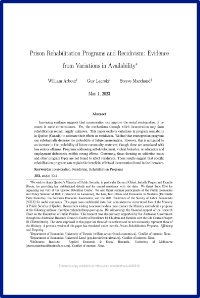By Mary Pattillo and Gabriela Kirk
Monetary sanctions include fines, fees, restitution, surcharges, interest, and other costs imposed on people who are convicted of crimes ranging from traffic violations to violent felonies. We analyze how people in the court system theorize about monetary sanctions with regards to four kinds of justice: constitutional, retributive, procedural, and distributive justice. Drawing on qualitative interviews with sixty-eight people sentenced to pay monetary sanctions in Illinois, we identify five themes that illuminate how respondents think about these forms of justice: monetary sanctions are: (1) justifiable punishment, (2) impossible to pay due to poverty, (3) double punishment, (4) extortion, and (5) collected by an opaque and greedy state. We find that for defendants in the criminal justice system, monetary sanctions serve some retributive aims, but do not align with the other three domains of justice. We discuss the policy implications of these findings.





















